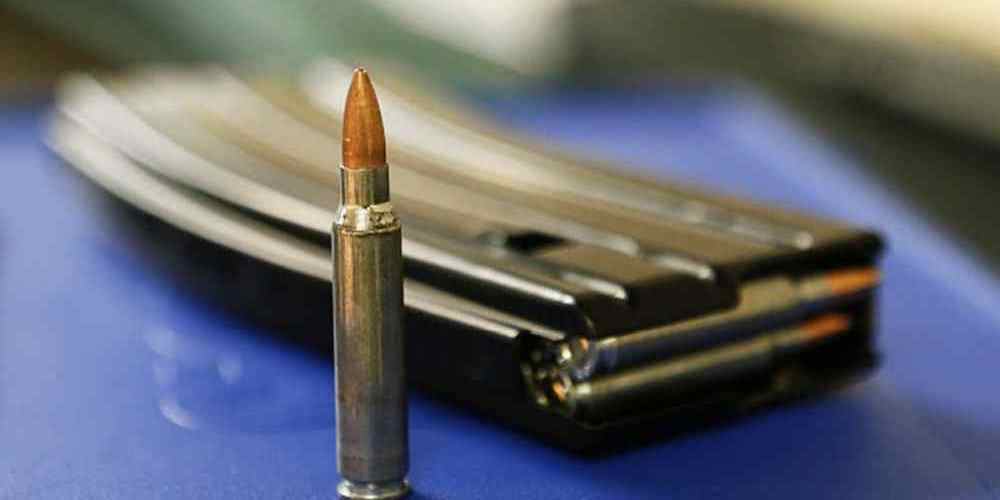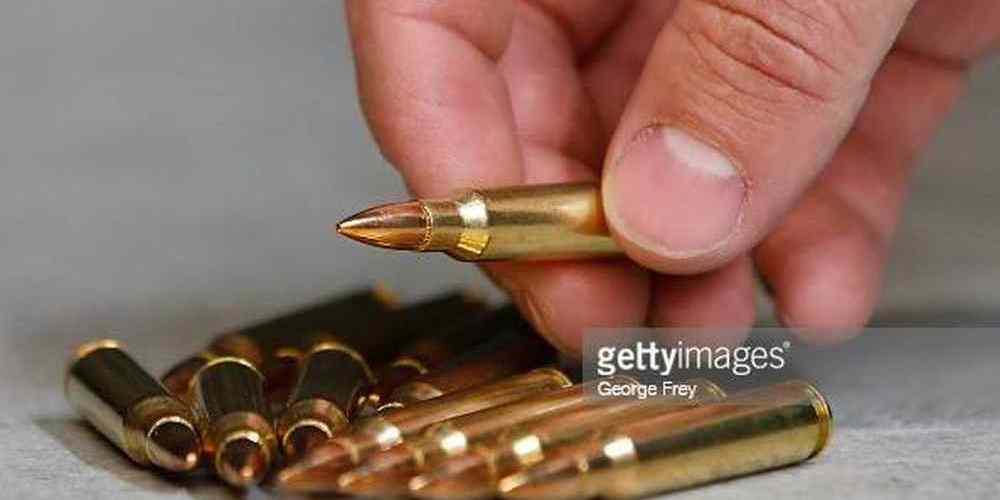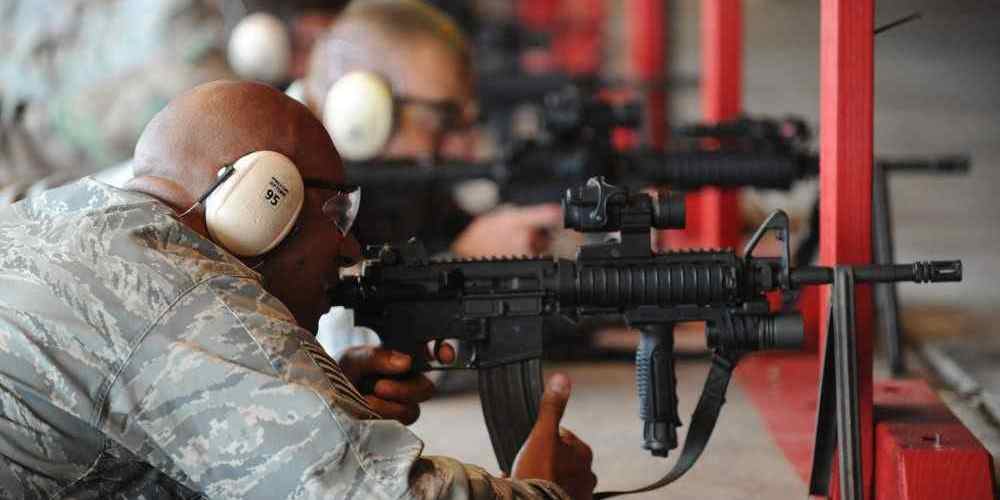“Know your limits: Understanding AR15 ammo pressure ratings”
Importance of Understanding AR15 Ammo Pressure Ratings
When it comes to shooting an AR15, understanding ammo pressure ratings is crucial for both safety and performance. The pressure generated by the ammunition in your rifle can have a significant impact on how it functions and how accurate your shots are. In this article, we will explore the importance of understanding AR15 ammo pressure ratings and how they can affect your shooting experience.
First and foremost, it is essential to understand what ammo pressure ratings are and why they matter. Ammo pressure ratings refer to the amount of pressure that is generated by the ammunition when it is fired. This pressure is measured in pounds per square inch (PSI) and can vary depending on the type of ammunition you are using. Different types of ammunition will have different pressure ratings, and it is important to use ammunition that is compatible with your rifle’s pressure limits.
Using ammunition with a pressure rating that is too high for your rifle can be dangerous. Excessive pressure can cause your rifle to malfunction, leading to potential damage to the firearm and putting yourself and others at risk. It is crucial to always use ammunition that is within the pressure limits specified by the manufacturer of your rifle.
On the other hand, using ammunition with a pressure rating that is too low can also have negative consequences. Low-pressure ammunition may not cycle properly through your rifle, leading to misfires or jams. Additionally, low-pressure ammunition may not provide the necessary velocity and energy for optimal performance, resulting in decreased accuracy and effectiveness.
To ensure that you are using the correct ammunition for your AR15, it is essential to familiarize yourself with the pressure ratings of different types of ammunition. Most ammunition manufacturers will provide pressure ratings for their products, allowing you to make informed decisions about which ammunition is suitable for your rifle. Additionally, you can consult with experienced shooters or firearms experts for guidance on selecting the right ammunition for your AR15.
When selecting ammunition for your AR15, it is important to consider not only the pressure rating but also other factors such as bullet weight, velocity, and energy. These factors can all impact the performance of your rifle and the effectiveness of your shots. By understanding how these factors interact with each other, you can choose ammunition that will optimize the performance of your AR15.
In conclusion, understanding AR15 ammo pressure ratings is essential for safe and effective shooting. By using ammunition that is within the pressure limits of your rifle and considering other factors such as bullet weight and velocity, you can ensure that your AR15 performs at its best. Remember to always prioritize safety when shooting and consult with experts if you have any questions about selecting the right ammunition for your rifle. With the right knowledge and attention to detail, you can enjoy a safe and successful shooting experience with your AR15.
How AR15 Ammo Pressure Ratings Impact Performance
When it comes to shooting with an AR15, understanding ammo pressure ratings is crucial for ensuring optimal performance and safety. Ammo pressure ratings refer to the amount of pressure generated by the ammunition when fired from a firearm. This pressure can have a significant impact on the performance of the gun, as well as the safety of the shooter.

One of the most important things to understand about AR15 ammo pressure ratings is that not all ammunition is created equal. Different types of ammunition can have vastly different pressure ratings, which can affect how the gun functions. For example, using ammunition with a pressure rating that is too high can cause excessive wear and tear on the gun, leading to malfunctions and potentially dangerous situations.
On the other hand, using ammunition with a pressure rating that is too low can result in poor performance, such as reduced accuracy and velocity. It’s important to find the right balance when selecting ammunition for your AR15, taking into account factors such as the type of gun you have, the intended use of the ammunition, and your own shooting preferences.
One way to ensure that you are using the right ammunition for your AR15 is to consult the manufacturer’s recommendations. Most gun manufacturers provide guidelines for the types of ammunition that are safe to use with their firearms, including information on pressure ratings. By following these guidelines, you can help prevent damage to your gun and ensure that it performs at its best.
Another important consideration when it comes to AR15 ammo pressure ratings is the impact they can have on accuracy. Ammunition with a higher pressure rating typically produces more consistent velocities, which can result in tighter shot groups and improved accuracy. This is especially important for competitive shooters or hunters who rely on precision shooting to hit their targets.
In addition to accuracy, pressure ratings can also affect the recoil of the gun. Ammunition with a higher pressure rating generally produces more recoil, which can impact the shooter’s ability to stay on target and quickly follow up shots. By choosing ammunition with a pressure rating that is appropriate for your shooting style and preferences, you can help mitigate the effects of recoil and improve your overall shooting experience.
Overall, understanding AR15 ammo pressure ratings is essential for maximizing the performance and safety of your firearm. By selecting ammunition with the right pressure rating, you can ensure that your gun functions properly, shoots accurately, and minimizes recoil. Whether you are a competitive shooter, a recreational shooter, or a hunter, taking the time to research and select the right ammunition for your AR15 can make a significant difference in your shooting experience. So next time you head to the range or out into the field, be sure to consider the pressure ratings of your ammunition and choose wisely.
Differences Between SAAMI and CIP Pressure Standards
When it comes to understanding AR15 ammo pressure ratings, it’s important to be aware of the differences between the SAAMI and CIP pressure standards. These two organizations have set guidelines for the maximum allowable pressure levels for ammunition, but they have some key distinctions that gun owners should be aware of.
SAAMI, which stands for the Sporting Arms and Ammunition Manufacturers’ Institute, is an American organization that sets industry standards for firearms and ammunition. They have established pressure ratings for various types of ammunition, including the popular AR15 rifle. SAAMI’s pressure ratings are based on the maximum safe pressure levels that a particular cartridge can handle without causing damage to the firearm or risking injury to the shooter.
On the other hand, CIP, which stands for the Commission Internationale Permanente pour l’Epreuve des Armes à Feu Portatives, is a European organization that also sets standards for firearms and ammunition. CIP’s pressure ratings are similar to SAAMI’s in that they are designed to ensure the safety of shooters and firearms. However, there are some differences between the two organizations’ standards that gun owners should be aware of.
One of the main differences between SAAMI and CIP pressure standards is the way in which they measure pressure. SAAMI uses a piezoelectric transducer to measure pressure, while CIP uses a copper crusher method. This means that the two organizations may have slightly different pressure readings for the same type of ammunition.
Another key difference between SAAMI and CIP pressure standards is the actual pressure levels that they set for ammunition. SAAMI typically sets lower pressure limits than CIP, which means that ammunition loaded to CIP standards may be more powerful than ammunition loaded to SAAMI standards. This is important for gun owners to be aware of, as using ammunition that is loaded to higher pressure levels than what their firearm is designed for can be dangerous.
It’s also worth noting that some firearms may be marked with pressure ratings that are specific to either SAAMI or CIP standards. This is important information for gun owners to pay attention to, as using ammunition that is not compatible with their firearm’s pressure rating can lead to malfunctions or even catastrophic failures.
In conclusion, understanding the differences between SAAMI and CIP pressure standards is crucial for gun owners who want to ensure the safety and performance of their firearms. By being aware of the pressure ratings set by these organizations and making sure to use ammunition that is compatible with their firearm’s pressure rating, shooters can enjoy their AR15 rifles safely and responsibly.
Common Misconceptions About AR15 Ammo Pressure Ratings
When it comes to understanding AR15 ammo pressure ratings, there are often misconceptions that can lead to confusion and potentially dangerous situations. It’s important to have a clear understanding of what these ratings mean and how they can impact the performance of your firearm.
One common misconception is that all AR15 ammo is created equal when it comes to pressure ratings. This is simply not the case. Different types of ammo can have varying pressure ratings, which can affect how the round performs when fired. It’s important to always use ammo that is within the recommended pressure range for your specific firearm to ensure safe and reliable operation.
Another misconception is that higher pressure ammo always means better performance. While it’s true that higher pressure ammo can result in increased velocity and energy, it can also put added stress on your firearm. Using ammo with pressure ratings that exceed what your firearm is designed to handle can lead to malfunctions, damage to the gun, and even injury to the shooter.
It’s also important to understand that pressure ratings can vary depending on the caliber of the round. For example, a .223 round will have different pressure ratings than a 5.56 round, even though they are both commonly used in AR15 rifles. It’s crucial to always use the correct caliber of ammo for your firearm and to pay attention to the pressure ratings for that specific round.
One way to ensure you are using the right ammo for your AR15 is to consult the manufacturer’s recommendations. Most firearms will have a list of approved ammo types and pressure ratings in the owner’s manual or on the manufacturer’s website. It’s important to follow these guidelines to ensure safe and reliable operation of your firearm.
If you are unsure about the pressure ratings of a particular type of ammo, it’s always best to err on the side of caution and choose a lower pressure option. While this may result in slightly lower performance, it’s better to be safe than sorry when it comes to the safety of yourself and others.
In conclusion, understanding AR15 ammo pressure ratings is crucial for safe and reliable operation of your firearm. It’s important to dispel common misconceptions and ensure you are using the correct caliber and pressure ratings for your specific firearm. By following manufacturer recommendations and choosing ammo within the recommended pressure range, you can enjoy shooting your AR15 safely and effectively.
Tips for Safely Using AR15 Ammo with Different Pressure Ratings
If you own an AR15 rifle, it’s important to understand the different pressure ratings of ammunition that can be used with it. Using the wrong type of ammo can not only affect the performance of your rifle but also pose a safety risk. In this article, we will discuss the importance of understanding AR15 ammo pressure ratings and provide tips for safely using ammo with different pressure ratings.
First and foremost, it’s crucial to know that AR15 rifles are designed to handle specific pressure ratings of ammunition. The most common pressure ratings for AR15 ammo are SAAMI (Sporting Arms and Ammunition Manufacturers’ Institute) and NATO (North Atlantic Treaty Organization) standards. SAAMI pressure ratings are typically lower than NATO pressure ratings, so it’s important to use the correct type of ammo for your rifle.
Using ammo with a pressure rating that is too high for your AR15 can cause excessive wear and tear on the rifle, leading to potential malfunctions or even catastrophic failure. On the other hand, using ammo with a pressure rating that is too low can result in poor performance and accuracy.
To ensure that you are using the correct type of ammo for your AR15, always check the manufacturer’s recommendations for pressure ratings. This information can usually be found on the packaging of the ammunition or on the manufacturer’s website. If you are unsure about which type of ammo to use, consult with a knowledgeable gunsmith or firearms expert.
When purchasing ammo for your AR15, be sure to only buy from reputable manufacturers. Cheap or low-quality ammo may not meet the proper pressure ratings and could potentially damage your rifle. It’s always better to invest in high-quality ammunition from trusted brands to ensure the safety and performance of your rifle.
Another important factor to consider when using AR15 ammo with different pressure ratings is the type of shooting you will be doing. For example, if you are using your rifle for target practice or competition shooting, you may want to use ammo with a lower pressure rating for better accuracy and control. On the other hand, if you are using your rifle for hunting or self-defense, you may opt for ammo with a higher pressure rating for increased stopping power.
Regardless of the type of shooting you will be doing, always follow proper safety protocols when handling and using ammunition. This includes storing ammo in a cool, dry place away from children and pets, never pointing a loaded firearm at anything you do not intend to shoot, and always wearing appropriate eye and ear protection when shooting.
In conclusion, understanding AR15 ammo pressure ratings is essential for safely using your rifle. By using the correct type of ammo for your rifle and following proper safety protocols, you can ensure the longevity and performance of your AR15. Remember to always check the manufacturer’s recommendations for pressure ratings, purchase high-quality ammunition from reputable brands, and consider the type of shooting you will be doing when selecting ammo. With these tips in mind, you can enjoy shooting your AR15 safely and responsibly.





